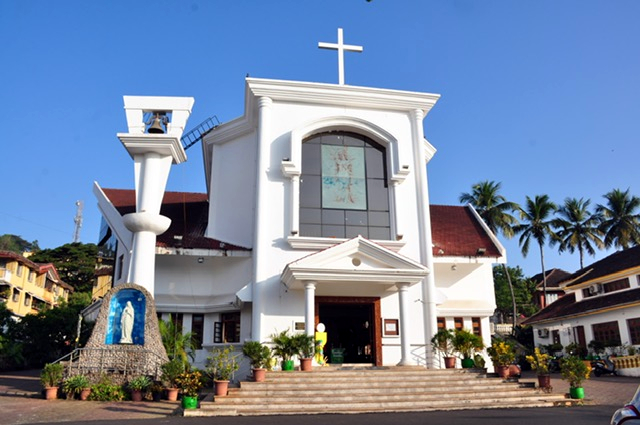
The Church in Aquem-Margao is dedicated to St Sebastian and the parishioners celebrate the feast on the Sunday prior to Ash Wednesday, which this year falls on March 2.
THE ORIGIN
The present modern church in Aquem dedicated to St. Sebastian has a history that goes back to the 16th century. Mons F. X. Gomes Catao says that the first chapel was constructed here by the Aquem Comunidade, though he does not mention the year.
Dr Alfred Antao in the souvenir ‘Purmol’, says that the first chapel may have been constructed by the Jesuits in 1562, since it was at this time that the Jesuit missionaries had begun missionary work in Salcete.
Tipu Suntu Naique Sar Desai, a descendant of the Pandavas was converted to Christianity on February 29, 1560, along with a thousand locals from Aquem.
He was given the name of Sebastian Coelho by the Jesuit missionaries; hence the date of the feast was fixed on this day.
He offered land to the Jesuits for the construction of a chapel, which on construction was dedicated to St Sebastian; it was also known as the Pandava Kopel; it was affiliated to the Navelim parish church. It was managed and maintained by the Comunidade of Aquem from 1562 onwards and later by the collection of funds from the local faithful.
LATER HISTORY
Not much of history is known about the chapel till the 20th century. In 1916, the chapel was enlarged and a big granite cross was set up at the top of the tower, which however was hit by lightning and destroyed in 1958.
There may have been non-resident chaplains till 1925 but no records are available about them. Fr Arduino Dias may have been the first non-resident chaplain in 1925. He was followed by Fr Joao de Piedade Viegas as its resident chaplain. He erected an altar in the chapel and dedicated it to Our Lady of the Rosary and St Joseph. It was inaugurated on January 12, 1938. The chaplain’s residence was constructed around the same time.
Till 1940, there were a handful of Catholic families that came under the chapel. Fr Elias Dias, a chaplain from 1940 to 1954, undertook a lot of development around the chapel and gave the land to Catholic families to construct their houses, which led to the increase of Catholic population of the chapel.
It is said that during his tenure, a gem studded golden reliquary bearing a relic of St Sebastian was brought from Italy and it was incorporated in the altar. During the salves and the novenas, the same was kept for public veneration.
The school of Sta Terezinha for music and elementary school came into existence in 1952. The Confre de Capela de Sto Sebastiao was installed in 1957.
From 1980 to 1990, the property in front of the chapel was developed, shops were constructed and given on rent, which brought income to the chapel. The last chaplain here was Fr James Torres e Silva. Since the Catholic population had increased rapidly due to many settlers, the need was felt to construct a new Church. Fr James collected funds from abroad and also from the locals for the new church building.
The Chapel was elevated to the Church on November 3, 2002. In 2009, a new church, next to the old chapel was constructed; it was inaugurated by Archbishop Filipe Neri Ferrao and Fr James Alex Torres e Silva was appointed the parish priest.
THE CHURCH
The church is big, it has a huge choir loft; it can accommodate more than a thousand people at a time. It has a small vestry at the left side of the entrance. Being a modern church, it has just one altar. Behind the altar on the cross is a huge image of the risen Jesus.
On one side of the church is a huge structure with the bell. In front of it is a grotto of Our Lady. A new cemetery for the church has been constructed at a short distance from the church.
[The writer is Superior at Casa Professa, Basilica of Bom Jesus in Old Goa]